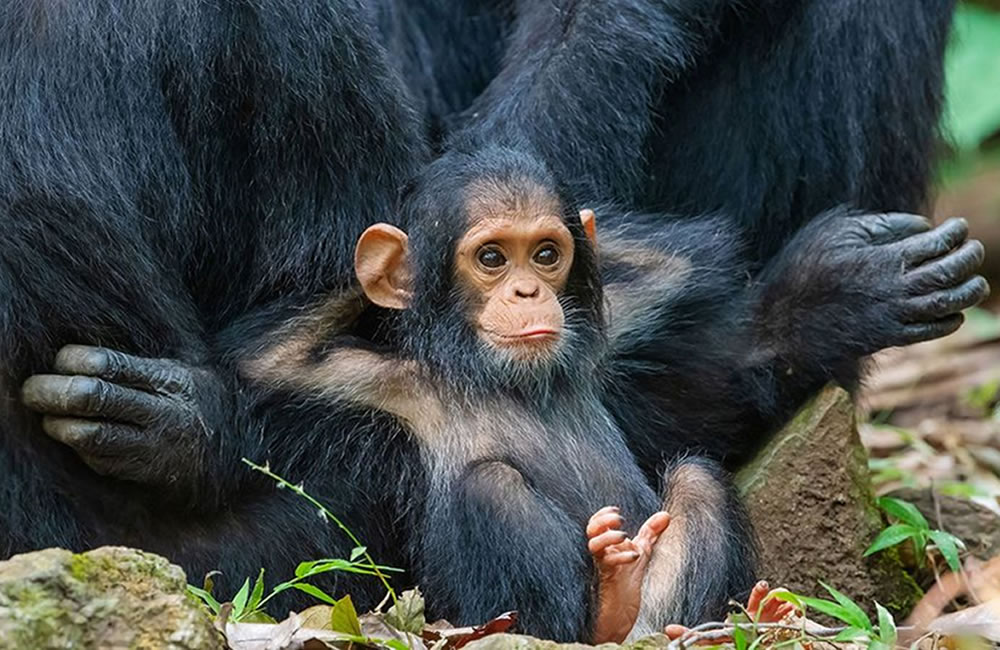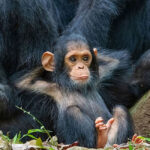Chimpanzees are our closest primate cousins yet their numbers are diminishing every day due to habitat loss related to deforestation and climate change. To help increase more awareness and to mark World Chimpanzee Day, which falls on July 14, here are 10 interesting facts about chimps you might not have known.
Chimpanzees have the ability to learn human languages such as sign language
In captivity, chimpanzees have been able to pick up American Sign Language (ASL) to communicate with caretakers. A chimpanzee named Washoe, was known to be the first non-human to learn to communicate via ASL and was able to do more than 350 signs. Washoe also managed to pass on some signs to her adopted son later on.
Chimpanzees are one of the few animals that are known to use tools
Much like humans, chimpanzees utilise self-made tools in order to feed and protect themselves, and have found ingenious ways to do so. From using small branches to dig out termites from their mounds, to smashing rocks to crack open nuts to searching the right length of twig to scratch themselves, chimpanzees have real creativity in turning tools to their benefit.
They will wage war
In 1974, Jane Goodall observed a splintering between a group of apes in Tanzania’s Gombe Stream National Park that were once unified. Over the next four years, the chimps fought over territory and deliberately killed one another, including an ambush of six chimps against one. While one group ended up victorious, their expanded territory pushed against the range of a third chimp group, prolonging the conflict.
Further studies have supported the theory that access to resources particularly food and mates are the primary triggers of violence among chimps. Most of the attacks are by male chimps against other males, and they are primarily against members of different communities. The attacks are more common when there is a higher population of males, as well as in areas with a higher population density overall. The research also revealed that the violent behavior was more common among eastern chimps than western chimps.
Female chimpanzees only give birth once every five years
Most pregnancies typically carry only one child. Infant chimpanzees will cling on to its mother’s furs and ride on her back until the ages three to five, resulting in a close familial bond even after reaching maturity.
Chimpanzees can live up to their 80s
The oldest recorded chimpanzee was Little Mamma, a captive female who was between 76 to 82 years old when she died in 2017. Though the average life expectancy for captive chimps are around 38 years old. Chimpanzee lifespan in the wild is a bit more difficult to record but one research has found chimps living at Ngogo in Uganda’s Kibale National Park to have an average life expectancy of 33 years.
They can walk on two legs
Chimps get around by a lot of climbing and swinging from tree to tree. Not unlike gorillas, chimpanzees usually walk on all fours, otherwise known as knuckle-walking, but have been recorded to walk on two feet on the rare occasion.
Chimpanzee are currently an endangered species
The International Union for the Conservation of Nature has declared the chimpanzee an endangered species. Due to increasing human activities such as logging, mining, oil extraction and highway projects, the natural habitats of chimpanzees have significantly degraded and impacted.
They warn their friends of danger
Chimps live in dangerous spaces, but fortunately they have each other’s backs. These great apes are known for warning their friends, but in a 2013 study, scientists discovered that chimps will adjust their warnings based on the information they perceive that the other chimps have about the threat. Chimps will make alarming vocalizations and gaze at a threat and then back at their group until other chimps take notice. If they believe another chimp is unaware, their vocalizations and gestures become more urgent. The study also found that chimps will give more warnings about threats to chimps who are relatives or friends.
They will eat just about anything
For a long time, chimps were assumed to be herbivores, but it turns out that they are omnivores that eat both meat and plants. Goodall first observed the creatures eating something other than plants when she saw them extract termites using sticks. Chimps also eat the meat of monkeys, and they strongly prefer red colobus monkeys. In areas where both are present, there are significant declines in the red colobus monkey population. While they eat a wide variety of fruits, vegetables, roots, and seeds, they avoid things they find distasteful, including food with smells associated with biological contaminants.
Chimps have demonstrated signs of Alzheimer’s
A team of researchers analyzed the preserved brains of 20 chimps that died between the ages of 37 and 62, paying specific attention to the regions that are damaged by Alzheimer’s. They found that four of the 20 brains contained plaque made of a protein called amyloid and tangles of a protein called tau, both indicators of Alzheimer’s in humans. All 20 brains showed signs of “pre-tangles.” Researchers in this study didn’t have records of changes in the chimps’ behaviors, including severe dementia, but the presence of the proteins and the plaque suggest that it would have been possible for the chimps to have experienced such changes.
They have stable personality types
In 1973, a group of researchers described the personalities of 24 chimps in Gombe National Park using the Emotions Profile Index. The index assigns scores based on eight major personalities: trustful, distrustful, controlled, dyscontrolled, aggressive, timid, depressed, and gregarious. Generally, females demonstrated more trusting natures, while males were more gregarious. Outliers existed, however, including one female chimp named Passion who rated very high as distrustful, aggressive, and depressed. Passion and her daughter were also identified as chimps that killed four infants belonging to another female.
Researchers returned to the park in 2010 to gauge the personalities of 128 chimps using 24 different metrics. They found that personalities remained stable among chimps regardless of whether they had been in the wild or held in captivity.
They may have rituals
Camera footage of four groups of chimpanzees in West Africa revealed animals that would throw stones at or into certain trees and then leave the rocks there so they could repeat the process. The practice did not appear to have anything to do with foraging or tool use. The authors suggest that the activity may be ritualistic in nature, while acknowledging that the very definition of “ritual” in this case is contested.
The majority of the participants were male, and the throwing activity included a pant hoot vocalization. The significance of the practice itself remains unclear, but it opens up another avenue for understanding chimpanzees.


